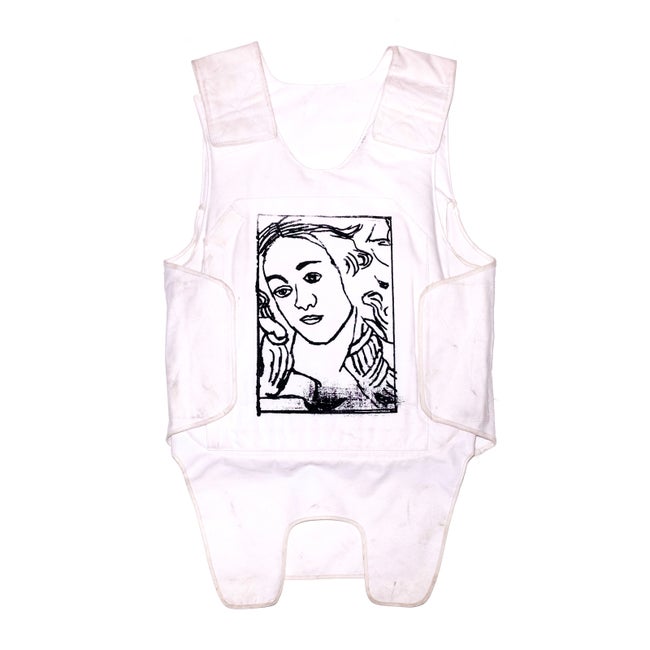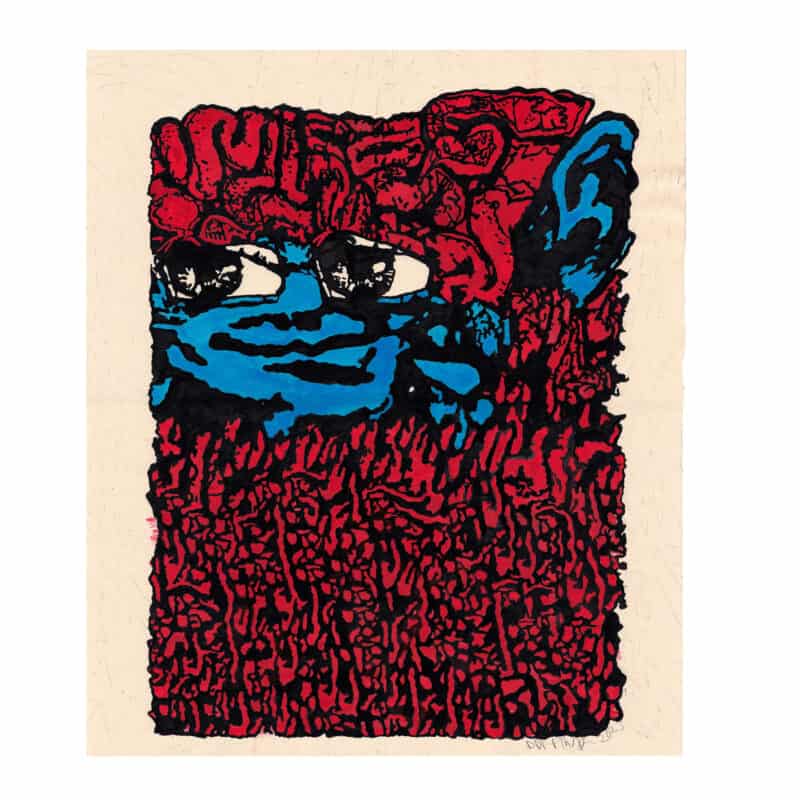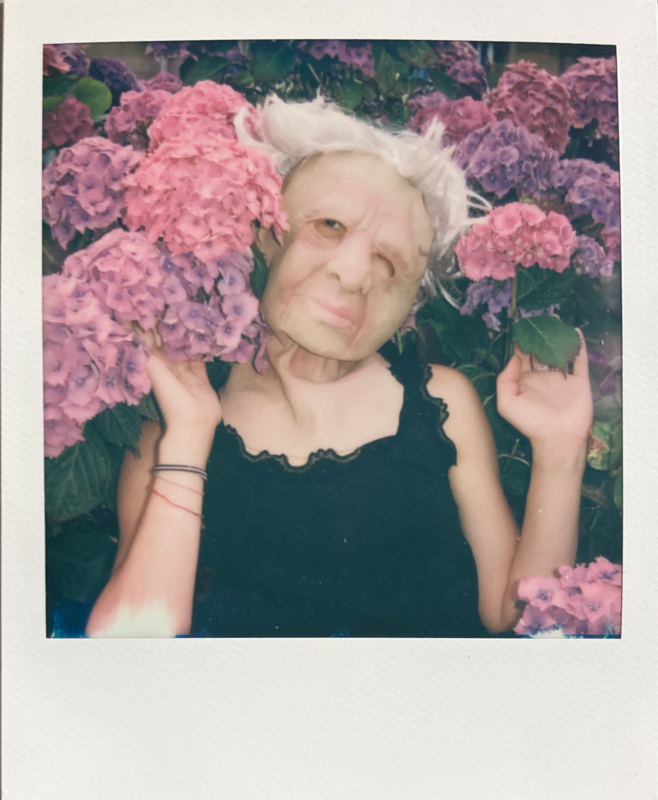
London based artist Daniel David Freeman recently sat down with art historian, writer and curator Hector Campbell to discuss his background in graphic design, his experience at Chelsea College of Art, his fascination with Andrew Graham-Dixon and his ‘imaginary’ clothing brand GET A LIFE.
Hector Campbell: Having graduated with a BA in Graphic Design from Camberwell College of Art in 2008, you’ve undertaken commercial work for clients such as Adidas, Converse, Dior, ICA, Netflix, Uniqlo and V&A. How does your background in commercial graphic design inform your current artistic output?
Daniel David Freeman: My design work has predominantly been around areas of ‘youth culture’, with the client’s focus predominantly on making things, for lack of a better word, ‘cool’. Working out what ‘cool’ is, however, is a complicated process. It requires identifying and then creatively translating whichever unspoken rules of design are ‘in’ at that moment. So picking up on that and injecting it into my art when it feels right is a great way to combine my practices. It has also meant my quality control is higher, design work has made me product-focused and my final outcomes are always straight forward in their function.
H.C: Your first two solo exhibitions, 2011’s Azalea’s Amazons and 2015’s Joseph And Other Beasts, both at Beach (London), consisted of primarily illustrative artworks and drawings. How did you balance your career in graphic design with your burgeoning fine art practice?
D.D.F: At that time my practice was centred around drawing, so those exhibitions showcased not only what I could do artistically, but also commercially (albeit with some grotesque subject matter). It’s what I call Eddie Peake theory – I always think of his show at White Cube Bermondsey in 2018, how all the more experimental and performative pieces in the middle of the gallery are what sold the paintings around the outside. For example, if a design client knew that I was also doing these more conceptually adventurous pieces in my art practice, it would make my cross-hatched graphic of a shoe subconsciously more attractive to them.
In the lead up to both exhibitions, I worked on everything simultaneously. I would take a break from my computer to draw Predator’s head on a lady’s body, or take a pause from Photoshop to shade my decapitated head on a spike. The preparation for the second show was even more amusing because at the time I was working in a graphic design studio that was in the process of becoming a full-on advertising agency. Clients would have flown in for meetings to discuss hundreds of thousands of pounds worth of business whilst I was in the corner of the room drawing dicks!

H.C: In 2018 you completed your MA in Fine Art at Chelsea College of Art, presenting for your degree show an exploration of dystopian luxury through a series of wearable sculptures created from sourced cultural ephemera. What led you to pursue an MA in Fine Art? And how did your time at Chelsea inform your practice?
D.D.F: One of my goals has always been to teach within higher education so an MA was essential, and as the more enjoyable elements of my practice were in fine art it was the obvious choice of qualification. The problem, of course, is always money. However, one day I was involved in a really bad cycling accident and was left with a broken collar bone and a potentially dangerous head injury. I lost a whole month of my life to codeine but the silver lining was an insurance payout big enough to invest in my education. Turns out severely hurting yourself can sometimes be very useful!
In terms of the course, I often couldn’t believe what was going on. One time, in particular, that comes to mind was when a friend and I begrudgingly decided to check out an event in the onsite gallery assigned to our course. To our surprise, we were met by a middle aged woman violently lashing her own naked body with some kind of petrol station bouquet to about 7 onlookers. We quickly left, confused, only to be greeted by another student being dragged down the corridor in what looked like a giant hamster wheel! My friend Rhys Coren perfectly described the MFA experience with quote from Will Ferrell’s Mugatu in Zoolander, “I FEEL LIKE I’M TAKING CRAZY PILLS!”
Not only did achieve the formal qualification but also I got through what felt like a difficult time in my life, and that gave me a new sense of pride. It gave me the confidence to realise that commercial design work, although creative and informative, is not actually part of my art practice. That realisation helped me take commissions less personally which has, in turn, made them a lot easier. Most importantly though it opened my eyes to just how much (bad) art there is in the world, and therefore you just have to do what feels right for you. I was extremely happy with the work I created whilst at Chelsea, and the time it gave me to focus on my ideas will forever be useful.
H.C: Alongside diverse interests such as thrash metal flyers, drum ‘n’ bass tapes, post-apocalyptic science fiction, Ghanian movie posters and gothic fan-art, you also incorporate plenty of art historical references into your artworks, including homages to William Blake, Pablo Picasso, Botticelli and Joseph Boys (in the form of the repeated ‘Bad Beuys Club’ motif). To what extend is your work influenced by art history or historical art movements?
D.D.F: I believe it is important to keep your influences as broad as possible, and to make that known. Attempting to combine diverse elements within the work can be difficult but, sometimes, the apparent incoherence of the connections is the most fun part. With the amount of information available to us nowadays it’s unrealistic for anyone to have their tastes in anything set in stone, and my work tries to express this.
I am more into the concept of historical fine art than the artwork itself. I watch art history documentaries religiously, but don’t have a passion for the subject any more or less than I do other areas of creativity. I enjoy hearing the grandiose language used by critics as they flail their arms around in description and I find their speculative definitions of other people’s classical art endlessly entertaining. I have a particular fondness for the Alan Partridge of British culture programming – Andrew Graham-Dixon. His confidence in his knowledge is matched only by his unceasing arrogance. I always wonder what he would say about my work. I’d love to see him rehearsing lines like, ‘He’s got a PRICK where his nose should be – he’s literally a DICKHEAD.’ I have this kind of Simpsonian image of his cryogenically frozen head floating around commenting on how influential my work is in the year 3000.
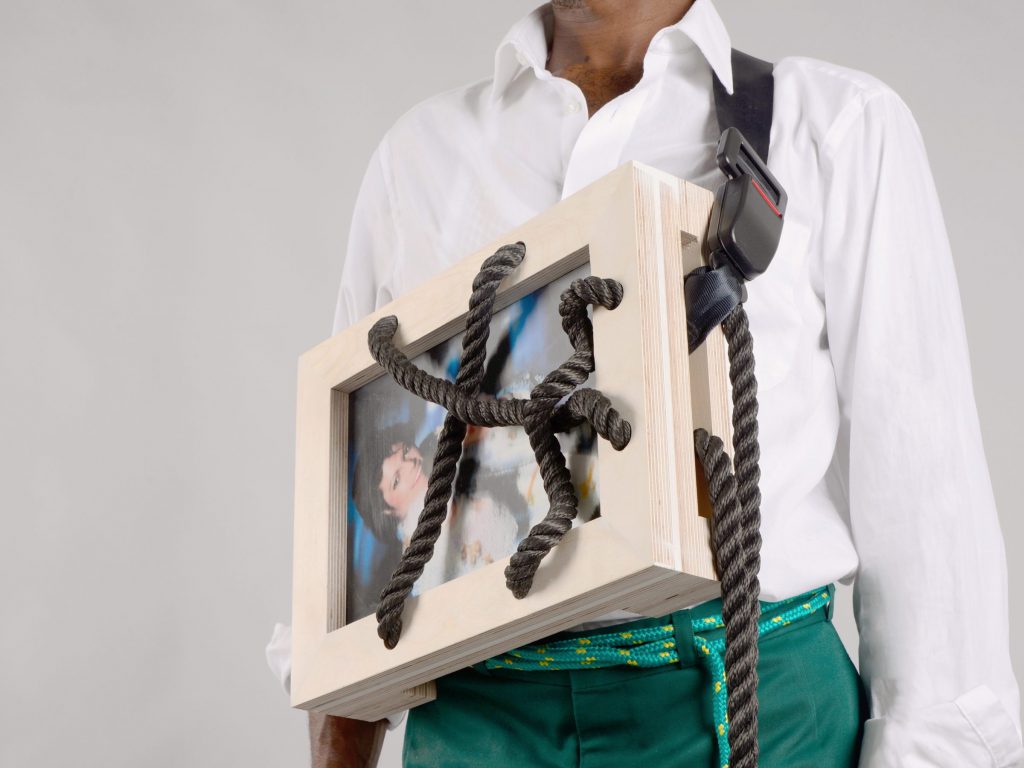
H.C: As part of a residency with the advertising agency Wieden and Kennedy, in 2017 you exhibited your ‘Expensive Shit’ – an early incarnation of your current ‘GET A LIFE’ project – that involved painted and embroidered military apparel and vintage flags. What were the conceptual underpinnings of that project? And how did it go on to inform ‘GET A LIFE’?
D.D.F: My artwork always champions the overlooked details of archaic printed matter rather than their central focus, an this is also true of how I see clothing. I find it fascinating how small details such as the angle of a cap or the length of a short can change people’s impressions so drastically. Therefore, using clothing as a means to carry these perhaps underrated illustrations made sense to me. Militaria also added conceptual depth to the project with it’s endless historical and subcultural associations, and specifically the tradition of customisation. Original embroidery on vintage tactical clothing elevates any item to holy grail status, and I wanted to play with that desirability. Would my embroidery make the item more or less attractive to their usual market? Could my embellishments make an item more interesting to a new market? Would the buyer even want to wear it? This experience of using fashion as a medium to experiment with perceptions definitely outlined the later intentions of GET A LIFE.

H.C: You established ‘GET A LIFE’ earlier this year, intended as an “Imaginary Brand” the art project revolves around an online store where you market your on-off wearable art objects while investigating the wider implications and associations to fashion, art and commerce. Could you explain a little how the project came about? And what it aims to explore conceptually and physically?
D.D.F: I felt I had reached a point where my practice was mostly concerning digital imagery, and I wasn’t satisfied with that. Therefore, as screenprinting was something I’d enjoyed years before but had always outsourced, I decided to set myself up to do it on my own. I wanted to create artworks based on found quotations through a mixture of collage and drawing. These prints and t-shirt graphics sought to merchandise a philosophy based on a growing combination of statements. I was trying to use illustration as a medium to explore the modern obsession of slogan hunting, it was essentially a knowingly obnoxious assault on ‘Live, Laugh, Love’ culture.
I found I had lots of leftover materials from years of attempted textile works and so began to transfer the prints onto fabric. These fabric posters fitted perfectly in line with the kinds of heavy metal merchandise I was touching on within the imagery, and with the backpatch being possibly the most iconic means of customisation within any subcultural uniform I couldn’t resist and started sewing them onto jackets.
Despite produced more and more of these one-off jackets, some with up to four different screenprinted artworks attached, I knew my capabilities in terms of production and cost were limited, so I dubbed the project an ‘imaginary brand’ and named it after my previous exhibition ‘Get A Life’. Once I had that framework of the project in place I realised how much more experimentation it allowed for, and by treating the project similar to a commercial client I was able to focus more on aesthetics than my personal artistry. Combining progressively more commercial imagery with items of varying obscurity provided a means to actively test the success of my branding. Could it make an outlandish item of clothing more acceptable? Or a more conventional item of clothing unwearable? Could the branding be successful enough to even interest fashion-focused art-buying virgins? Or could GET A LIFE entice previously plain-clothed art enthusiasts to wear more branded clothing?
The project gives me an opportunity to explore the effects of influence as a whole, and by existing within different sectors of creativity the brand’s individual elements can take cues from one another. By branding artworks and clothing in the same way I can explore how a brand might operate with in-house referencing. Simply put, the art strives to inspire the clothing, and vice versa.
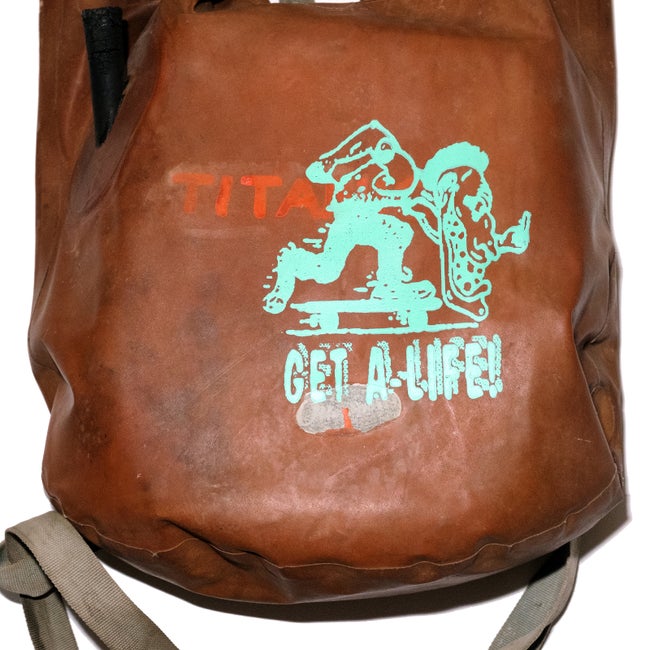
H.C: Many of the pieces available through ‘GET A LIFE’ are reclaimed clothing or objects that are then altered and adapted within the house style of the brand, and currently include an UN protective vest with acrylic screen-printed reclaimed canvas patches, a hand screen-printed 1950s US Air Force Leather A2 jacket, a screen-printed East German military Hazchem protection and a hand screen-printed antique ‘Titanic’ life jacket. Where and how do you source these original objects? And what attracts you to certain garments?
D.D.F: They are pretty much all from eBay, dull answer I know. However, navigating that in itself is a skill, as buying reasonably priced clothing online is becoming ever more challenging. The next GET A LIFE run is all second-hand t-shirts and that is an economy of its own. The post-ironic Vice generation followed by the wavey garms mentality has left literally any used graphic t-shirt with a large resale value. The other day I saw a Static X t-shirt selling for £40, and if you know anything about awful 2000’s nu metal you’ll know that is a shocking price!
A lot of the reason I choose the garments I do owes to an underlying narrative I have in my head, I always think about an alternate or future universe in which hyper-real B movie street gangs actually exist. I would love to create costumes for the kinds of dystopian sci-fi I love and I think this definitely crosses over into GET A LIFE. By focusing on items that are part of recurrent trends I am able to create a futuristically ageless aesthetic. Military clothing has been in vogue since the hippy generation and picked up countless subcultural associations along the way. Similarly, the college sweater has played a leading role in the sartorial identities of anything from ivy league university students to LA gangsters and 90s hardcore punk kids. The more out there items in the ‘collection’ are, therefore, extensions of this thinking. So often movies predicting future fashion simply exaggerating contemporary clothing rather than designing new ones. I’m trying to illustrate this by presenting ultra-functional, unwearable items alongside the more conventional although still utilitarian ones.
H.C: Finally, I was amused by many of the titles of the pieces, which are frequently self-referential and art historically influenced, including The Retired Lolita, Mike Kelley On The One Show, You Read Blake Like The Devil Reads The Bible & (The) Wife Imitates Art. How do you land on the title for each piece?
D.D.F: Occasionally the titles come to me completely out of the blue, and sometimes they are collages of other things I’ve heard and stored in my brain somewhere. I think it’s extremely important to take the piss out of yourself (and other artists) wherever possible, and these titles give me an enjoyable excuse to do so. Adding humour in this way perfectly expresses that GET A LIFE, more than anything, is about fun!
